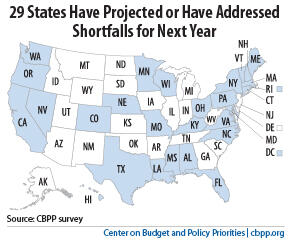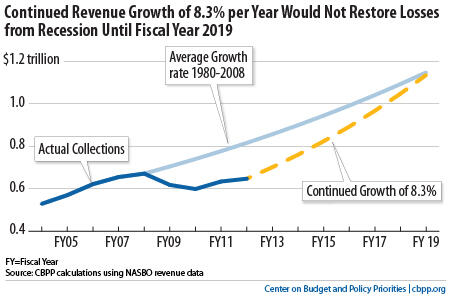BEYOND THE NUMBERS
Our newly updated survey of state budget shortfalls suggests that states continue to face a long and uncertain recovery:

- States’ budget challenges remain considerable. Twenty-nine states have projected or addressed budget gaps totaling $47 billion for fiscal year 2013, which begins July 1 in most states. (See map.) States that haven’t already done so will have to close these gaps before the fiscal year begins, since nearly every state is required to balance its budget. (These 29 states include some states with two-year budget cycles ending in fiscal year 2013, most of which have already closed their projected 2013 shortfalls through spending cuts and other measures scheduled to take effect next year.)
- State finances are recovering, but slowly. Shortfalls are generally smaller than in previous years. But they remain large by historical standards — the largest in at least two decades for the fourth state fiscal year after the end of a recession — as the economy continues to be weak and unemployment is still high.
Shortfalls persist because state revenues are coming out of a very deep hole caused by the recession. While revenues grew by 8.3 percent between July 2010 and June 2011 (the 2011 fiscal year for most states), they would have to continue growing at that pace for seven more years to get them back on a normal track, as the graph shows.
States have already made deep cuts to services that are critical to their economic fortunes, like education. (As this study from the Federal Reserve Bank of Cleveland shows, education plays a large role in determining a state’s income growth over the long term.) Such cuts will likely grow if states do not raise additional revenue.

As my colleagues Nicholas Johnson and Erica Williams have noted, policymakers can prevent further cuts to services and reverse some of the cuts that they have made since the start of the recession by boosting revenues, such as by raising taxes on high-income taxpayers and profitable corporations. That’s a sound way for states to lay the foundation for a strong economic future.
